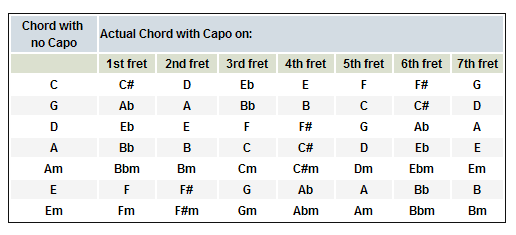

It’s easy to deduce from there that it helps you raise the key that you’re playing in. So you’ve already learned that a capo raises the pitch of the guitar. So perhaps we’ll see some more interesting designs.

Not just for the guitar, but other stringed instruments too. Believe it or not, there are still patents being applied for this year. Nowadays there are a few types of capos around that work well and inflict no damage on the guitar.

He improved upon the yoke and screw design by adding a lever. In 1850, a man called James Ashborn applied for his patent of the capo. The Spanish capos were made out of bone and metal, for example. Some of them used similar mechanisms to what’s used today, except that these capos used wire to secure them to the guitar. The c-shaped brass capos graduated into little contraptions you had to tighten with a screw. Since then, many more capos were developed. I’m wincing in sympathy of all those scratched guitars. It was a c-shaped piece of brass that probably was harder to use than those on offer today and very likely scratched the neck of the guitar. Back then and for many years after, it was known as a capotasto. The first capo was developed in the 1700s. The History of the Capoįor all the history buffs out there, here’s a bit about the humble beginnings of the capo and how it came to be what we know today. The capo, when put in place correctly (it’s not that hard to do depending on the type of capo you have), raises the pitch of the strings. The pressure along with the protective rubber or soft plastic coating or cushioning also prevents it from slipping around. Don’t worry, when I say clamp, I mean it only clamps the guitar hard enough to let the strings ring clearly, like you would with your finger. What is a Capo?Ī capo is kind of like a plastic or metal clamp, which in the modern age includes rubber or softer plastic to protect the guitar.
#Capo chart how to#
I’ll be explaining how to use a capo and, if you don’t have one, why you should seriously consider getting one. Unfortunately, most of them don’t come with instructions. Perhaps you already have one, but you’re not quite sure how to use it. This is an accessory that is not only affordable, but something I strongly recommend you add to your arsenal. If you’ve watched a lot of people play guitar, you’re pretty likely to have come across at least some of them using a capo.


 0 kommentar(er)
0 kommentar(er)
